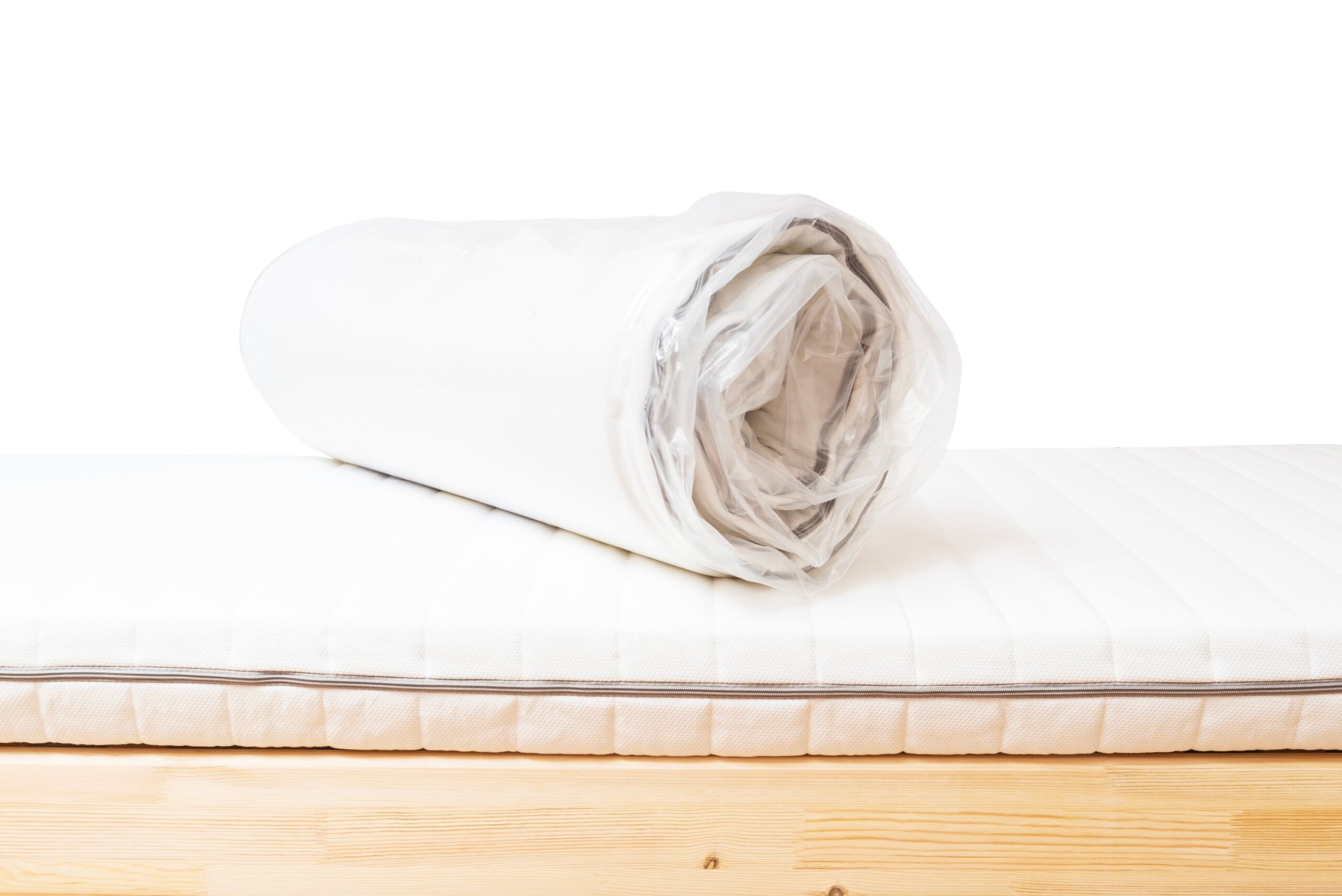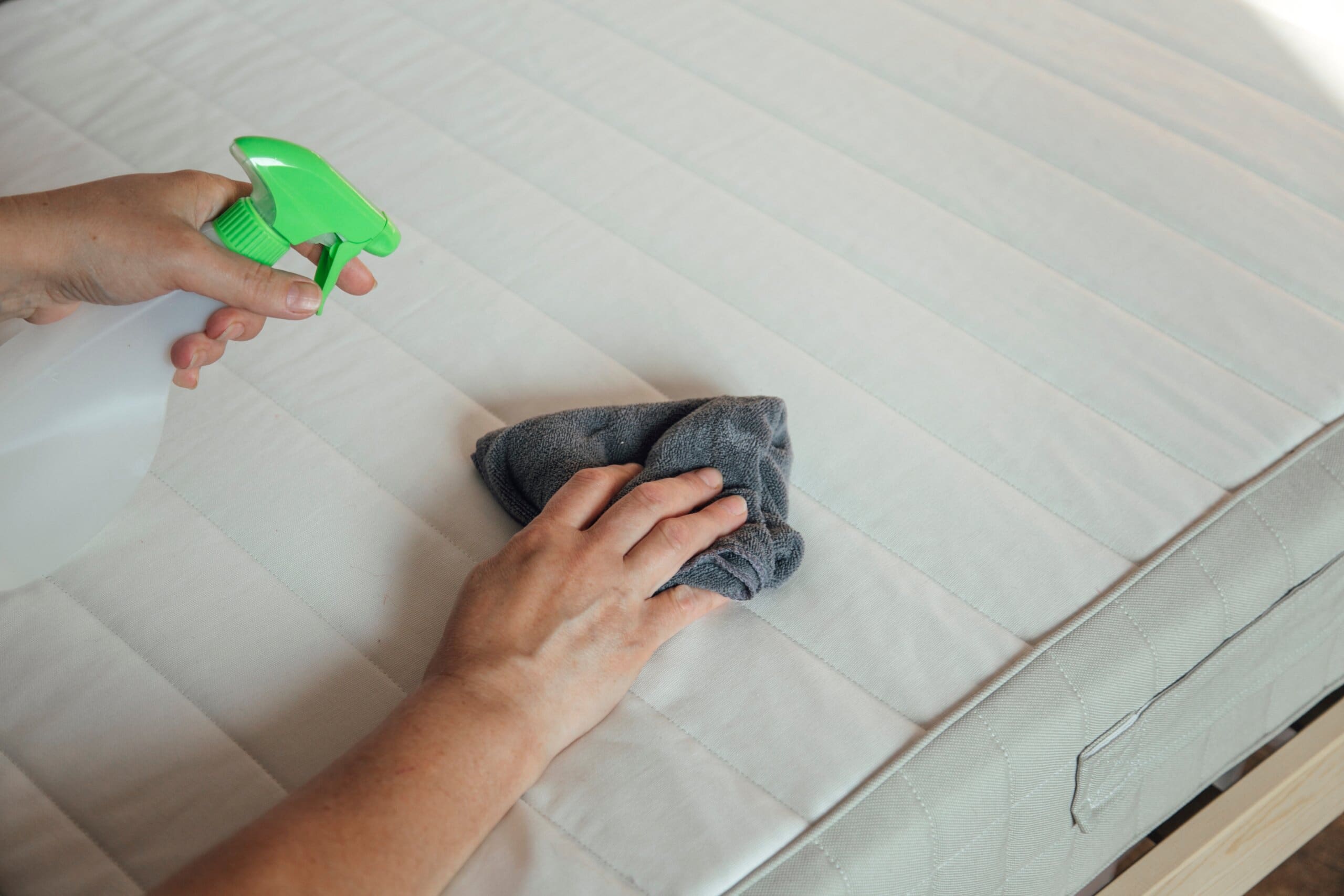Speak to an expert: 0333 0069769
Here's how to clean and care for your memory foam mattress so you can enjoy it for as long as possible.
Memory foam mattresses have excellent pressure relieving qualities, cradling your body and giving you a weightless sensation as you sleep. They can also last a long time - just as long as a regular pocket sprung mattress - so long as you look after it properly.
We’ve put together this guide to answer all of your questions regarding caring for your memory foam mattress, so you can enjoy its comfort for up to 8 years.

Provided you regularly strip and wash your bedding, cleaning a memory foam mattress should be a simple case of wiping away any excess debris that could otherwise work its way into the mattress. Once you’ve removed your bedding, vacuum the surface of the mattress and inspect it for any spills or stains, which should be treated immediately.
'Washing' your memory foam mattress is best avoided - moisture and memory foam don’t mix well. If you have to wash a stain away, make sure you take the time to properly dry out the spot you’ve washed and only use a small amount of liquid.
Regularly changing your bedding and preventing stains from setting in are the main things to worry about when keeping a memory foam mattress clean – which is why a waterproof mattress protector is a great addition for most owners.
To keep it in the best possible condition, you should clean a memory foam mattress every six months. Avoid using hydrogen peroxide unless the manufacturer's instructions say you can, as this can bleach the fabric. If you do want to use it, test a small area first and ensure your room is well ventilated.
Moisture is memory foam’s worst enemy – especially when taking the form of liquid spillages. Whether that’s a nighttime accident, an unruly pet marking its territory or a dropped cup of tea, liquids need to be dealt with quickly to avoid them causing lasting damage.
The first step for dealing with a stain is to spray it sparingly with warm water and whatever type of soap the mattress manufacturer recommends. Once you’ve sprayed the stain, scrub it gently with a cloth, being careful not to void the warranty.
If you’ve only just realised your mattress has urine on it and it has had a chance to set in, you might need a stronger cleaning solution as it’s a bit harder to get out.
Create a solution of 240ml of hydrogen peroxide, 3 tablespoons of baking soda, and a couple of drops of washing-up liquid. Pour the solution into a spray bottle and saturate the stains before letting it sit for at least an hour. As the peroxide evaporates, any urine remaining in your memory foam mattress is drawn out with the baking soda. Vacuum off the baking soda and use a damp cloth to gently rinse the area. Repeat if the stains or odour haven’t lifted.
If you can catch the urine while it is wet, it is easier to remove as it has less of a chance to soak into your mattress. Act fast and remove all of your bedding. Put it in the washing machine as soon as possible and remove excess moisture by gently pressing dry towels or paper towels on the wet area before cleaning.
Don’t scrub as this can push the urine stain further into the mattress. Make a cleaning solution of 50% white vinegar and 50% warm water. If you have a spray bottle, saturate the area. White vinegar helps to neutralise the smell. Blot the memory foam mattress again to remove excess moisture. Apply a generous layer of baking soda, then let it sit for a good few hours – at least eight. Once the baking soda has soaked up any excess moisture, vacuum it off. Examine your mattress, checking for signs of stains and any remaining odours.
Baking soda is effective in neutralising urine odours. Sprinkle baking soda over the entire mattress. Apply even more to the areas that smell stronger, and let it sit for at least 10 hours. Vacuum the mattress, and then repeat if necessary.

Cleaning spills isn't the only thing you need to consider when looking after your memory foam mattress. To get the most out of your new mattress and increase it's lifespan, consider these memory foam mattress care tips.
With the modern trend of vacuum-sealed mattress deliveries, it’s easy to see how you can make an early mistake with your new mattress. When taking it out of the box and removing it from any plastic wrapping, avoid using a knife, which could accidentally cut into the foam. Use scissors instead, as they give you more control and reduce the risk of piercing your new mattress.
Your memory foam mattress should be housed in a bedroom free of excess moisture and damp. Damp can lead to mould and mildew build-up, which can make its way into the mattress, ending up trapped between the foam layers. In very minor cases, running a dehumidifier in the room before you take delivery can help, or ventilate the room properly with open windows.
It can take anywhere up to 2 weeks for your memory foam mattress to fully expand. Of course, you can tell by the look and feel of it if it’s comfortable enough to sleep on for the first night, but be aware that it might take a day or two to be comfortable enough for a proper night's rest.
Don’t be tempted to use your memory foam mattress as soon as you’ve unrolled it - this can cause lasting damage. Your memory foam mattress needs time to inflate and expand, so don’t put any weight on it for the first few hours at least. In fact, we recommend resisting the urge to sleep on it for the first 24 hours.
For more help and information on expanding, read our guide on How Long Does A Memory Foam Mattress Take To Expand?
Unlike a traditional mattress, memory foam mattresses should not be flipped. They are purposefully built in a specific layered format, which flipping it would ruin and lead to discomfort when you sleep. Instead, to preserve the foam, rotate the mattress 180 degrees every two to three months.
If longevity is important to you, fitting a mattress protector is almost always a good idea. For memory foam in particular, a mattress protector can be key to defending against the main threats that affect memory foam: punctures/cuts and moisture ingress.
A memory foam mattress protector will ensure the mattress underneath doesn’t get cut or damaged by pets, misplaced household items like keys, zips on laundry piles etc. A waterproof protector will further protect the mattress against spillage.
If you’ve cleaned your mattress, either as part of a regular routine or to clean up a spillage, you’ll need to let it dry out fully. Moisture that remains trapped in foam compromises its performance and can lead to all manner of unhygienic issues, such as mould or mildew.
For those reasons alone, it’s vital that you dry out your memory foam mattress before you redress the bed. If it’s cold, turn on the heating in the bedroom, or run a dehumidifier if you have one.
Some people use a hair dryer, which can work to quickly dry out a spot, but may also damage the foam layers. If you’re going to use one, make sure you don’t have it on the highest setting and hold it well back from the mattress, so that the foam doesn’t melt.
Remember to air out your mattress regularly too – some people do this every day, which may seem excessive, but will help keep the mattress in tip-top shape. To air it out, all you’ll need to do is remove the bedsheet, open a window and run a fan or dehumidifier in your room.
We offer memory foam mattresses in a range of firmness levels, from soft, medium to firm. However, we understand that your mattress firmness needs might change over time.
Memory foam is renowned for being quite soft, as it contours to the very unique shape of your body. However, a firm mattress may be more suitable for someone who sleeps on their back or front, as it aids spinal alignment and supports your mid-waist area and lower back. A firm mattress can also be great for those with back or joint pain for the same reasons.
A soft mattress, however, is more suited to someone who sleeps on their front. Soft memory foam mattresses are especially great if you’re pregnant, as they offer instant pressure relief and will mould to the shape of your body, relieving pressure from every point.
The easiest way to change the firmness of your mattress is with a mattress topper. We stock mattress toppers in a range of firmnesses, and they can easily be removed or switched as your needs change. Our memory foam mattress toppers are also available in different thicknesses, depending on how much you wish to change the feel of your mattress.
Not found the answer you're looking for? Check out our FAQs.
For more help and advice on looking after your new memory foam mattress, you can read our guides on mattress sagging, how to soften a memory foam mattress, and how to make your memory foam mattress cooler.